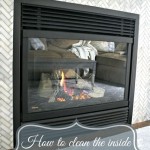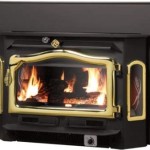Fireplace Glass Doors vs. Screen: A Comparison of Safety, Efficiency, and Aesthetics
The choice between fireplace glass doors and a fireplace screen involves a balance of safety considerations, heating efficiency, aesthetic preferences, and maintenance requirements. Both options serve to contain sparks and embers within the firebox, but they offer distinct advantages and disadvantages that impact the overall fireplace experience. Understanding these differences is crucial for homeowners seeking to optimize their fireplaces for safety, warmth, and visual appeal.
This article will comprehensively compare fireplace glass doors and screens, covering aspects such as safety, heat output, energy efficiency, aesthetic design, installation complexities, maintenance procedures, and cost factors. It is intended to provide a detailed analysis to aid in making an informed decision based on individual needs and priorities.
Safety and Spark Protection
The primary function of both fireplace glass doors and screens is to prevent sparks and embers from escaping the firebox and potentially causing fires within the home. A key difference lies in the degree of protection offered. Fireplace screens, typically constructed of metal mesh, provide a barrier against larger embers but may allow smaller sparks to pass through. The mesh size in a screen is a critical factor influencing its effectiveness in spark arrestment. Screens are designed to prevent the outward projection of burning debris, minimizing the risk of igniting nearby carpets, furniture, or flammable materials.
Fireplace glass doors, on the other hand, offer a more comprehensive barrier. When properly closed, they completely enclose the firebox, preventing virtually all sparks and embers from escaping. This enclosed design significantly reduces the risk of accidental fires, making glass doors a preferable option for homes with young children or pets, or in areas prone to drafts that could carry embers further into the room.
However, glass doors can become extremely hot during a fire, presenting a burn hazard if touched. It is essential to exercise caution and supervise children around a fireplace with glass doors. While the doors themselves provide superior spark protection, their surface temperature mandates responsible use and awareness of potential contact burns.
Heat Output and Energy Efficiency
The impact on heat output and energy efficiency is a significant differentiator between fireplace glass doors and screens. Fireplace screens have minimal impact on heat radiation. The open mesh allows for unimpeded heat flow into the room while the fire is actively burning. This direct radiation provides immediate warmth, but it also means that a significant amount of heat escapes up the chimney when the fire is not burning. The draft created by the chimney acts as a constant vacuum, pulling warm air out of the room, even when the damper is closed.
Fireplace glass doors can significantly improve energy efficiency. When the doors are closed during a fire, they help to radiate more heat into the room, as the glass absorbs heat and then slowly radiates it outwards. This can result in a more consistent and comfortable room temperature. More importantly, closing the glass doors after the fire has died down helps to reduce the amount of warm air that escapes up the chimney. This insulated effect minimizes heat loss and can contribute to lower heating bills over time. However, some heat is still lost via conduction through the glass and frame. Some higher-end glass doors are also equipped with gaskets to improve the seal around the firebox, further limiting air leaks. The degree to which glass doors improve energy efficiency depends on factors such as the quality of the doors, the tightness of the seal, and the design of the fireplace itself.
In summary, while a screen provides more immediate heat radiation, glass doors offer better overall energy efficiency by reducing heat loss when the fire is not burning and by radiating heat more consistently during a fire. This makes glass doors a more sustainable choice in the long run, particularly for fireplaces that are used frequently.
Aesthetic Design and Visual Appeal
The aesthetic impact of fireplace glass doors and screens is a subjective matter, largely dependent on individual preferences and the overall style of the room. Fireplace screens offer a more traditional and open fireplace aesthetic. The visible flames and glowing embers create a classic, inviting ambiance. Screens come in a variety of styles and finishes, from simple and functional to ornate and decorative. They can be easily changed to match the decor, and their open design allows for a full view of the fire.
Fireplace glass doors offer a more modern and refined aesthetic. The glass encasement creates a clean and polished look, which can complement contemporary or transitional interior designs. Glass doors are available in a wide range of styles, from minimalist frameless designs to more elaborate options with decorative trim and accents. Many glass doors feature tinted or reflective glass, which can add visual interest and enhance the flames' appearance. The primary visual difference is that the flames are viewed through a glass barrier, which some may find less intimate than the open view provided by a screen.
While both options can enhance the visual appeal of a fireplace, choosing between glass doors and a screen ultimately depends on the desired aesthetic and the overall style of the room. Screens offer a more traditional and open feel, while glass doors provide a more modern and controlled look.
Installation and Compatibility
The installation process for fireplace glass doors and screens differs significantly. Fireplace screens are typically straightforward to install. Most screens are freestanding and simply placed in front of the fireplace opening. Some screens may require minor assembly, such as attaching legs or handles, but the process is generally quick and easy, requiring minimal tools or expertise. The primary consideration for screens is ensuring that they are the correct size for the fireplace opening to provide adequate coverage.
Fireplace glass doors usually require more complex installation. They are typically custom-fitted to the specific dimensions of the fireplace opening, ensuring a tight seal and proper functionality. Installation may involve measuring the fireplace opening, selecting the appropriate door size and style, and securing the doors to the firebox using screws or other fasteners. Depending on the complexity of the installation and the type of fireplace, professional installation may be recommended. Incorrect installation can result in air leaks, reduced energy efficiency, and safety hazards. When installing glass doors, it's essential to verify that the unit is compatible with the type of fireplace (e.g., masonry fireplace, zero-clearance fireplace), as some doors are not suitable for all fireplace designs.
Therefore, while screens offer a simple and accessible installation process, glass doors require more careful planning and potentially professional assistance. The complexity of glass door installation adds to the overall cost and should be factored into the decision-making process.
Maintenance and Cleaning
The maintenance requirements for fireplace glass doors and screens relate primarily to cleaning and upkeep. Fireplace screens, being made of metal mesh, are relatively easy to clean. Regular brushing or vacuuming can remove accumulated dust and soot. For more stubborn stains, the screen can be washed with soap and water, ensuring it is thoroughly dried to prevent rust. The durability of a screen means that maintenance is simple, fast and infrequent.
Fireplace glass doors require more frequent and careful cleaning. Soot and creosote tend to accumulate on the glass surface, obscuring the view of the fire. Special fireplace glass cleaners are available to remove these deposits without damaging the glass. A soft cloth or sponge should be used to avoid scratching the surface. It is essential to allow the glass to cool completely before cleaning to prevent cracking or injury. Additionally, the metal frames of the glass doors may require occasional cleaning and lubrication to ensure smooth operation. Hinges and latches should be checked periodically to ensure they are functioning correctly. Neglecting the cleaning of glass doors not only diminishes their aesthetic appeal but can also reduce their efficiency in radiating heat.
In conclusion, while screens require minimal maintenance, glass doors demand more frequent and meticulous cleaning to maintain their appearance and performance. The added cleaning effort associated with glass doors is a factor to consider when weighing the pros and cons of each option.
Cost Considerations
The initial cost of fireplace glass doors and screens can vary considerably, depending on factors such as size, style, materials, and features. Fireplace screens generally have a lower upfront cost compared to glass doors. Basic screens can be purchased for relatively inexpensive, while more elaborate decorative screens may cost more. The simplicity of their construction and installation contributes to their affordability. The price of a screen reflects the aesthetics and materials used in it's creation.
Fireplace glass doors typically have a higher initial cost due to their more complex design, custom fitting requirements, and potentially professional installation. The price can range from several hundred to several thousand dollars, depending on the size, style, materials, and features, such as decorative trim, tinted glass, or integrated air vents. The cost of installation should also be factored in, particularly if professional installation is required. Although the initial investment is higher, the long-term energy savings and increased safety provided by glass doors may offset the upfront cost over time.
When evaluating the cost of fireplace glass doors and screens, it is important to consider not only the initial purchase price but also the potential long-term benefits, such as energy savings and reduced maintenance costs. A cost-benefit analysis that takes into account these factors can help in making a financially sound decision.

Fireplace Glass Doors Vs Screens Full Service Chimney

Fireplace Glass Doors Vs Screens Full Service Chimney

Fireplace Glass Doors Vs Screens Full Service Chimney

Fireplace Glass Doors Vs Screens Full Service Chimney

Fireplace Glass Doors Vs Screens

Fireplace Glass Doors Vs Screens Full Service Chimney

Fireplace Glass Doors Vs Screens

Why You Need Glass Doors On Your Fireplace

Fireplace Glass Doors Vs Screens

Fireplace Glass Doors Vs Screens Full Service Chimney
Related Posts








